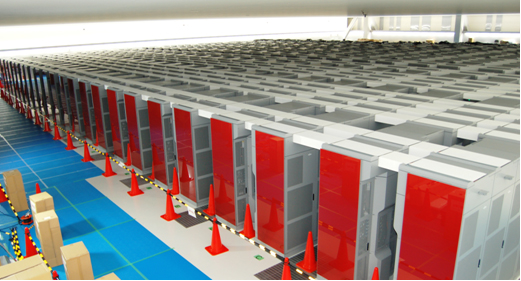During this week I gathered some information related to the use of supercomputers and what tasks they are capable to perform.
We all know what a microcomputer is, most of us have one. A Supercomputer is much more powerfull than a microcomputer. Supercomputers are the fastest type of computers that exist, they are build in order to perform several tasks that require immense amounts of calculations (quantum physics, weather forecasting, climate research, oli and gas exploration, as well as molecular modelling, it can also perform simulations such as airplanes in wind tunnels simulations or the detonation of nuclear weapons, structural analysis, computational fluid dynamics, chemistry, electronic design, among many other uses
Now I’m going to describe some of the most powerfull computers of the world and what are they used for. I gathered this information from top 500. This page contains information about the top 500 supercomputers. Here I’m only going to mention three.
We all know what a microcomputer is, most of us have one. A Supercomputer is much more powerfull than a microcomputer. Supercomputers are the fastest type of computers that exist, they are build in order to perform several tasks that require immense amounts of calculations (quantum physics, weather forecasting, climate research, oli and gas exploration, as well as molecular modelling, it can also perform simulations such as airplanes in wind tunnels simulations or the detonation of nuclear weapons, structural analysis, computational fluid dynamics, chemistry, electronic design, among many other uses
Now I’m going to describe some of the most powerfull computers of the world and what are they used for. I gathered this information from top 500. This page contains information about the top 500 supercomputers. Here I’m only going to mention three.
1. The K computer is ranked the world's fastest supercomputer, with a rating of almost 10 petaflops. It uses 88,128 2.0GHz 8-core SPARC64 VIIIfx processors packed in 864 cabinets, for a total of 705,024 cores, manufactured by Fujitsu with 45 nm CMOS technology. It has a memory of 1410048 Gb, and a power of 12659.89 Kw.
2. The Tianhe-1 system is composed of 112 computer cabinets, 12 storage cabinets, 6 communications cabinets, and 8 I/O cabinets. Each computer cabinet is composed of four frames, with each frame containing eight blades, plus a 16-port switching board. Each blade is composed of two computer nodes, with each computer node containing two Xeon X5670 6-core processors and one Nvidia M2050 GPU processor. The system has 3584 total blades containing 7168 GPUs, and 14,336 CPUs, managed by the SLURM job scheduler.The total disk storage of the systems is 2 Petabytes implemented as a Lustre clustered file system,and the total memory size of the system is 262 Terabytes.
3. The Jaguar is manufactured by Cray Inc. It has a peak performance of just over 1,750 teraflops (1.75 petaflops). It has 224,256 x86-based AMD Opteron processor cores. Jaguar is a Cray XT5 system, a development from the Cray XT4 supercomputer.
aguar's XT5 partition contains 18,688 compute nodes in addition to dedicated login/service nodes. Each XT5 compute node contains dual hex-core AMD Opteron 2435 (Istanbul) processors and 16 GB of memory. Jaguar's XT4 partition contains 7,832 compute nodes in addition to dedicated login/service nodes. Each XT4 compute node contains a quad-core AMD Opteron 1354 (Budapest) processor and 8 GB of memory. Total combined memory amounts to over 360 terabytes (TB).
If you want to know more about this type of computers you may want to check this page.
Bibliography


No hay comentarios:
Publicar un comentario